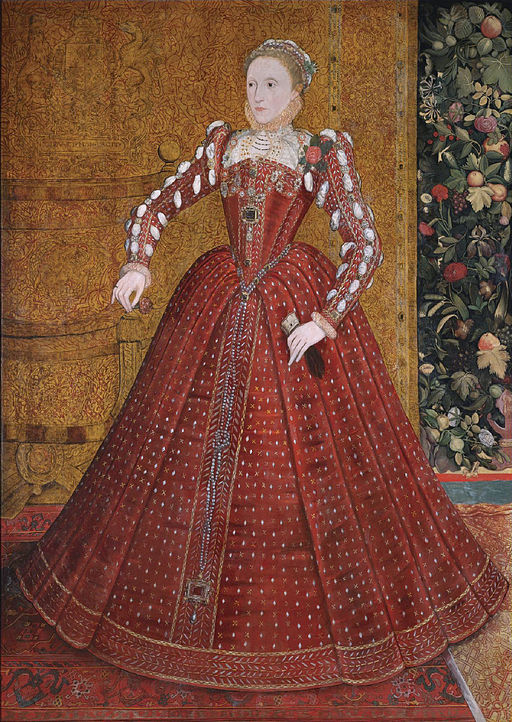By the time Elizabeth I was on the throne (in 1559), the ideal of female beauty was a snow-white face, with daubs of red on each cheek. To achieve the deathly pallor, women relied on ceruse, which is white lead. They slathered the stuff from hairline to bosom. Freckles and pockmarks from smallpox could be hidden by using a mixture containing powdered mercury. The whole surface was then spackled with egg white, which, when dried, gave the face a stiff and other-worldly sheen.
Unfortunately ceruse and mercury are highly toxic. The ceruse was made by steeping bars of lead in vinegar and urine and then scraping off the white powder that formed. Ceruse could lead to baldness, mental problems, and open sores. Mercury caused blackened teeth, an unsteady walk, and all too often, an early death.
After Elizabeth suffered a bout of smallpox, she began coating her face thickly with the lead paste—reputedly as much as half an inch thick in places—to smooth her pocked skin.
Lest you think these crazy cosmetics are a thing of the past, think again. According to this investigation conducted by the Chicago Tribune in 2010, testers found that several skin-lightening creams on the market contained toxic doses of mercury. There’s a booming market today for such creams; in some cultures, lighter skin is seen as a sign of higher status, while many Caucasians use the lighteners to erase blemishes and smooth out skin tone.
Stay tuned–Wednesday’s blog will be more fun-time lead-based cosmetics horror stories!
